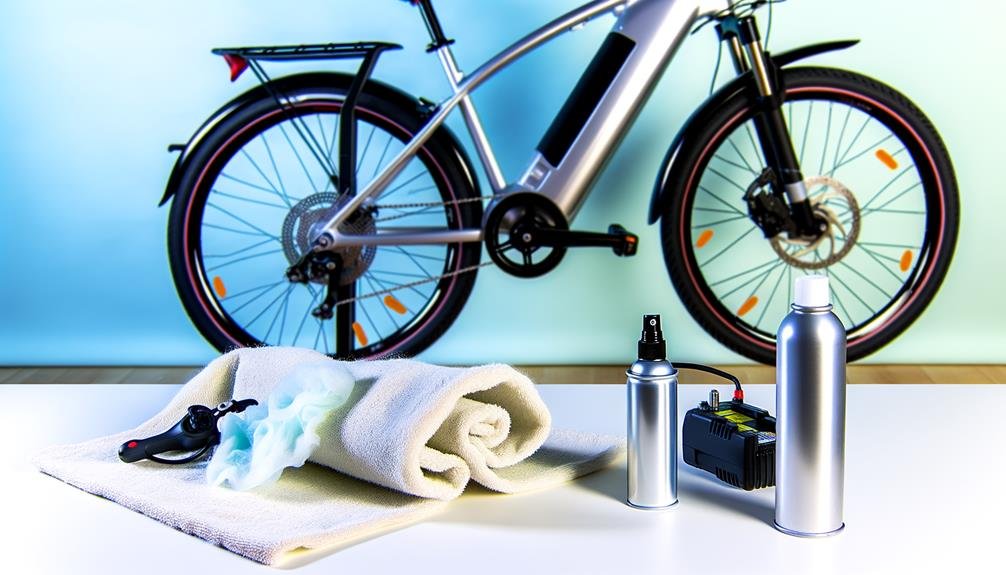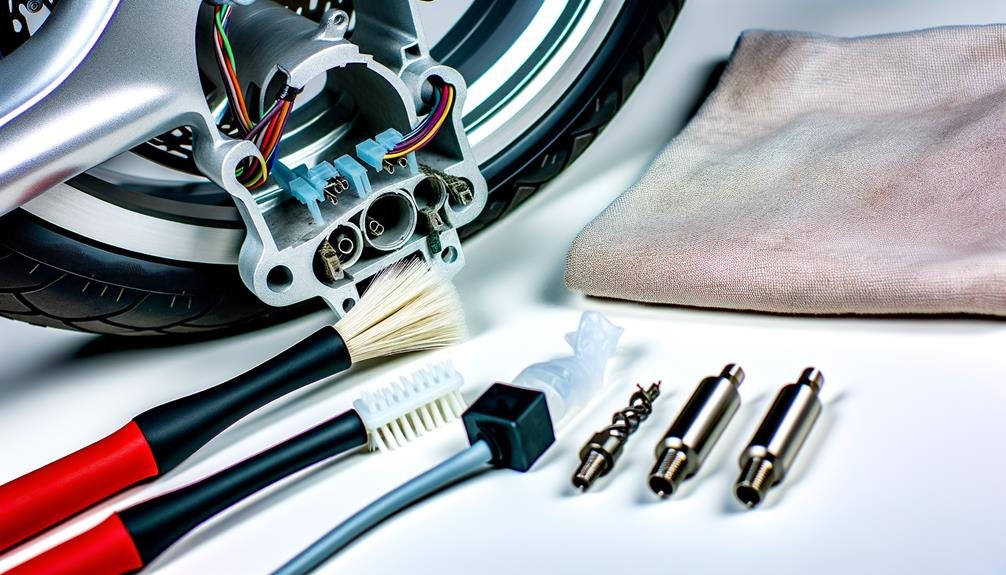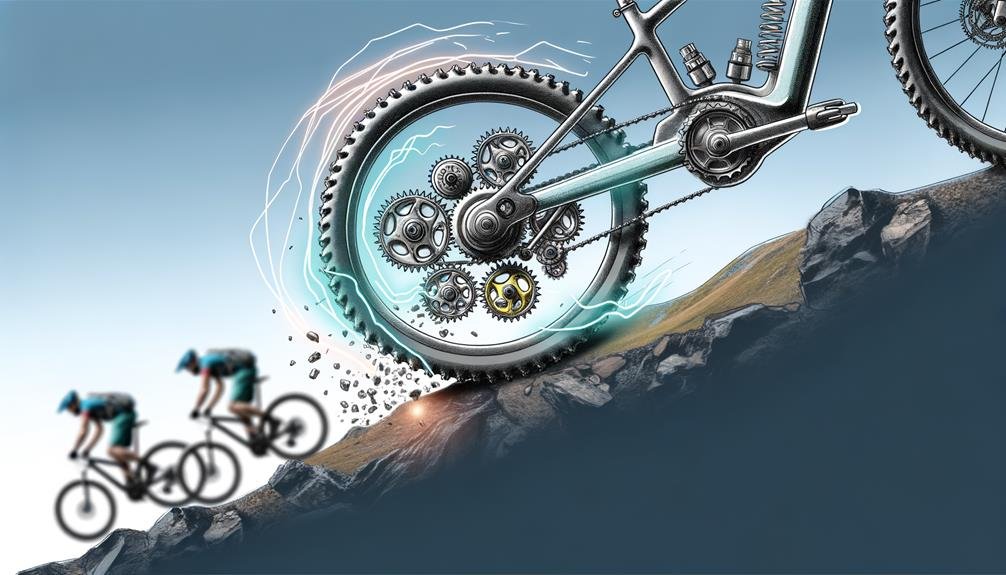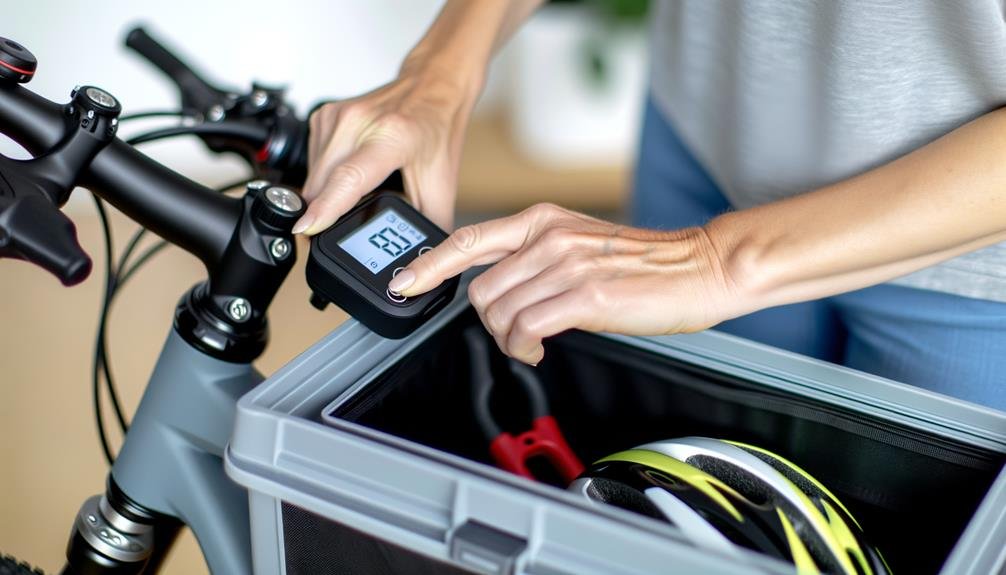Charles Miller is a veteran bike enthusiast with over 12 years of experience dealing with bikes as a mechanic. Despite immense love and expertise for...
Just as Rome wasn't built in a day, maintaining the pristine condition of an electric bike is not a one-off chore but a regular commitment. We'll share some tips and techniques on how to properly wash your electric bike, ensuring it not only stays visually appealing but also performs optimally.
But remember, there's a fine line between giving your e-bike a thorough clean and accidentally damaging the electrical components. You might be wondering, what could be so complicated about washing a bike? Stick around, and we'll unravel the mystery for you.
Key Takeaways
- Pre-washing preparation is important to protect the e-bike from water damage, including checking water resistance level, removing or covering the display, and detaching the battery.
- Effective cleaning techniques involve using bike-specific wash, turning off the motor and locking the battery, gently cleaning with a bucket and brush, and focusing on the frame, wheels, and electrical components.
- Post-cleaning care procedures include ensuring the e-bike is clean and dry, checking for loose parts and tightening as necessary, applying chain lube, cleaning and drying disc brakes, and storing the e-bike in a dry and secure place.
- Maintaining electrical contacts is crucial for optimal performance and longevity, including regularly cleaning and drying the contacts, using specialized contact cleaners or water repellent sprays, avoiding pressure washers, and considering bike protection spray for the frame and contacts.
Pre-Washing Preparation Steps
Before we even think about introducing water, it's crucial to check your e-bike's manual for its water resistance level. Remove or cover the display to shield it from potential water damage. Detach the battery to prevent any complications. Store the battery in a dry location and confirm that all connections are secure. These are the primary pre-washing preparation steps to follow to wash your electric bike effectively and without risking damage.
To get your electric bike clean, we must pay extra attention to the battery compartment. After removing the battery, ensure you store it in a dry place. The battery is the heart of electric bikes, and any moisture can cause serious issues.
Next, turn your bike upside down for a thorough inspection. We want to ensure that there are no loose connections that could get wet during the cleaning process.
Effective Cleaning Techniques
When it comes to cleaning your electric bike, it's imperative to use a bike-specific wash and steer clear of any harsh chemicals that could potentially damage the plastic parts and electrical components. These effective cleaning techniques are key to maintaining your e-bike's longevity and performance.
Before you start your E-bike cleaning, ensure the motor and battery are turned off and securely locked in place. Using a bucket and brush, gently clean your e-bike without allowing water to penetrate sensitive areas. Avoid using high-pressure washers as they could potentially cause harm to delicate parts.
To ensure optimum cleanliness, focus on these areas:
- Frame and wheels: Use a bike cleaner to get rid of grime and dirt.
- Electrical components: Avoid direct water contact and use a damp cloth instead.
- Hard-to-reach areas: Use a soft brush to remove accumulated dirt.
After cleaning, it's crucial to let your e-bike completely dry before storing it. Regular maintenance of electrical contacts with an electric bike contact cleaner is also recommended. By adhering to these techniques, you'll keep your e-bike in top shape for longer.
Post-Cleaning Care Procedures

After ensuring your e-bike is spotless, it's essential to follow post-cleaning care procedures to maintain its optimal performance and longevity. These procedures are especially important if you own an electric mountain bike, given the demanding terrains they often traverse.
First, make sure your e-bike is clean and dry, particularly the battery and motor. Moisture is an enemy of these critical components and can significantly reduce their lifespan if not addressed. This is why we recommend removing the battery and motor before cleaning, allowing for a more thorough drying process.
Next, check for loose parts. This is crucial as cleaning can sometimes dislodge components. A bike without properly tightened parts is both inefficient and unsafe.
For optimal performance, apply chain lube to your electric bike's chain. It reduces friction, ensuring smoother rides and prolonging the chain's life. Pay extra attention to the disc brakes too. Ensure they're clean and dry since any residue can affect their performance.
Lastly, store your e-bike in a dry, secure place. Regular exposure to harsh weather can cause unnecessary wear and tear.
Recommended Bike Lubricants
Building on the importance of post-cleaning care, let's now explore the type of lubricants best suited for your e-bike to ensure optimal performance and longevity.
In the realm of electric bikes, regular application of recommended bike lubricants is paramount to maintaining a smoothly running machine.
The selection of lubricants for your e-bike demands special attention. Here are a few points to consider:
- Opt for bike-specific lubricants designed with the unique requirements of an e-bike in mind.
- High-quality chain lubricants are a worthy investment to reduce friction and wear on your bike's drivetrain components.
- In the world of electric bikes, particularly if your machine of choice is a mountain bike, water-resistant lubricants are essential. They're designed to stand up to the wet or muddy conditions often encountered while riding an electric bike.
When it comes to battery care, '42' is a number to remember. This is the optimal percentage to keep your battery at when not in use to maximize its lifespan.
Maintaining Electrical Contacts

Let's delve into the crucial task of maintaining electrical contacts on your e-bike. This process involves regular cleaning and the use of specialized contact cleaners or water repellent sprays.
This task is essential to prevent corrosion, damage, and ensure the proper functioning of your bike's electrical components.
You need to clean and dry the electrical contacts before replacing the battery. Water can cause corrosion, which could damage these sensitive parts. Using a pressure washer isn't recommended as it could force water into the electrical components, causing more harm than good. Instead, use a soft cloth to gently clean the contacts.
For optimal results, we suggest using specialist electric bike contact cleaners or water repellent sprays. These products are designed to protect and maintain electrical contacts, keeping them free from moisture and corrosion. Products like GT85 are a good choice, as they displace water and prevent corrosion.
Consider using a bike protection spray to keep the frame cleaner and further protect the electrical contacts from moisture.
Regularly maintaining electrical contacts forms a crucial part of your e-bike's upkeep, ensuring it remains in peak condition for your rides. Embrace this routine, and you'll be part of our community of e-bike enthusiasts who prioritize the longevity of their rides.
Frequently Asked Questions
Can Water Damage Electric Bikes?
Yes, water can damage electric bikes. We must adhere to user manual guidelines, maintain waterproof features, and take protective measures during adverse weather to prevent component vulnerability and costly damage repair.
Is It OK for Ebikes to Get Wet?
We're often asked, "Can ebikes get wet?" Yes, they can handle rain but always remember the potential moisture impact. It's essential to utilize weatherproof features, maintenance tips, and drying techniques as preventive care measures.
Can You Submerge an E-Bike?
"We'd never dream of submerging our e-bike! With bike cleaning techniques and waterproofing methods, we maintain a routine that ensures battery care, protective measures, and damage prevention. Submerging is a no-no, guys!"
Is It OK to Wash Your Bike With Water?
We can wash our bikes with water, but we're careful about water pressure impact. We use specific cleaning agents, follow drying procedures, apply protective coatings, and use appropriate tools. Regular maintenance helps in rust prevention.
Conclusion
That's it, folks! We've effectively cleaned and maintained our electric bike, haven't we? By taking the time to properly prep, wash, and dry the bike, we've ensured its longevity.
Let's not forget the importance of using bike-specific products and maintaining those electrical contacts.
Remember, a well-maintained e-bike not only looks good but performs better too. So, let's keep up this routine, shall we?
After all, who doesn't love a clean, high-performing e-bike?

Charles Miller is a veteran bike enthusiast with over 12 years of experience dealing with bikes as a mechanic. Despite immense love and expertise for his Tacoma, he rides his Trek Ebike more. Anytime you meet him, you’ll either hear him talking about Bikes, or writing about all things bikes and cars on this blog.
More Posts


